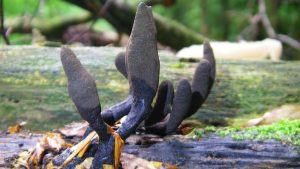#133: Russula virescens species group
Mushrooms come in all different colors, even green! Although green is an unusual color for mushrooms, certain mushrooms sporting green colors are common. The most frequently-encountered green mushrooms are from the Russula Of these, my favorite ones are the Quilted Green Russulas (also called Greencracked Brittlecaps), which belong to the Russula virescens species group. R. virescens can be found in North America, Europe, and Asia. However, preliminary DNA studies suggest that specimens found in North America actually belong to a few different species and should not be lumped in with R. virescens. Unfortunately, mycologists have yet to formally classify these American species. As a result, the North American species in the group can be called R. virescens for now.







![#011: Characteristics of Kingdom Fungi [Archived]](https://www.fungusfactfriday.com/wp-content/themes/hueman/assets/front/img/thumb-small-empty.png)

